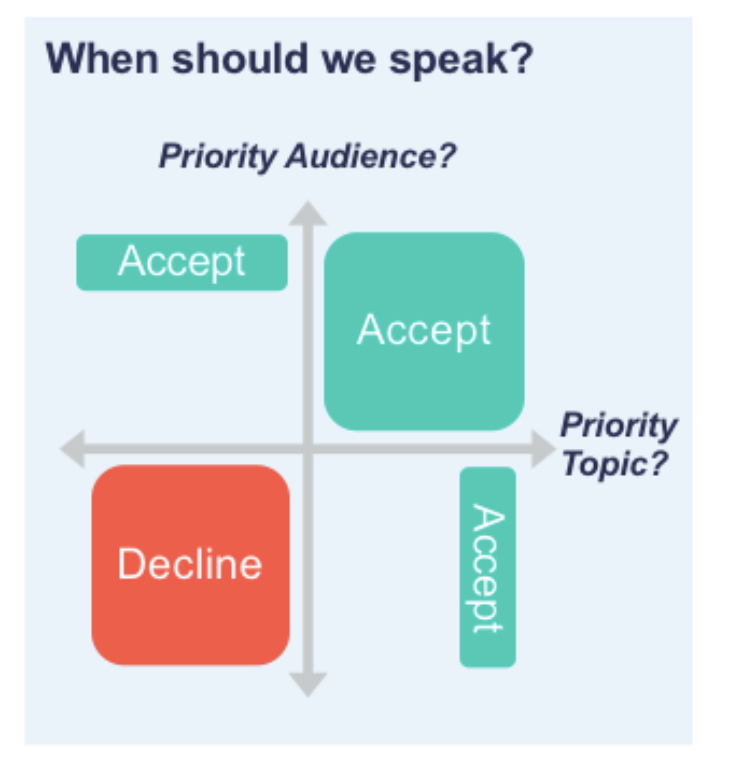Let’s mull the lull
July 16, 2020
As exec comms pros catch their first breath after five months of constant internal communications, some contemplate the quiet, and others ready themselves for the next phase.
Is your internal exec comms falling off a little lately? Or is it falling off the table?
Into our fifth month of publishing our daily Executive Communication: Coronavirus newsletter, we still have plenty to report on as we cover “what leaders are saying, and how they’re sounding” on issues related to the pandemic and also to the aftermath of George Floyd.
But we had noticed that examples of internal communications—emotive executive videos and thoughtful CEO emails—had waned a bit in recent weeks. Then we got an email from the CEO comms chief at a Fortune 100 company:
“After a furious flurry of communications when Covid-19 was beginning—March and April and into May—there is now no stomach for updates” from the office of the CEO. “I think we did outstanding work early on. But there hasn’t been an update from the boss in over a month+. Earnings are on the horizon and we’ll deliver some somber news there … but the gulf between ‘all-in’ and what we have now is jarring. You getting that from others? I don’t think it’s message fatigue as much as it is resignation.”
The exec comms pro added, “Don’t misunderstand: I’m not advocating messaging either, because I’m flummoxed about what we could say. And I was a proponent early to say we needed to taper communications off because it was beginning to sound repetitive. But we have gone silent. What are you seeing from other companies? Summer lull? Resignation? Wait-n-see?”
We asked our readers—also exec comms professionals—if they could relate. Here are three perspectives, and my own analysis of each.
“We at Caterpillar are slowing Covid-related communications quite a bit,” said Len Vraniak, the strategic communications manager for the CEO of the heavy equipment maker. Vraniak says CEO comms focus now on “updates that relate to big issues (Return to Workplace, safety protocol updates for facilities, travel advisories, etc.). There was tremendous momentum early on for a regular drumbeat of communications from leaders. That momentum has died, mainly because there isn’t much more of impact to say.”
Murray’s analysis: Yes, if we’re defining exec comms largely as CEO comms, and CEO comms as announcements and pronouncements from on high, there’s definitely less to say at this rather nebulous stage in a crisis whose end we cannot see from here. Repeating “we’re in this together” dulls employees’ senses, and you’re better off keeping your powder dry for when you do have something momentous to announce or something useful to say. However …
The CEO of a large healthcare system misses his regular communications with employees, says his exec comms chief, who wishes to remain anonymous. “My CEO is a communications-first guy. He invests in great comms and that makes my job easy, most of the time,” she says. “He came to me a couple of weeks ago—slightly annoyed that his messaging had tapered off. Turns out he missed connecting with the system with the new frequency we had all become accustomed to. He missed his multiple weekly webinars to various internal audiences, and he missed his weekly (and sometimes more) video addresses to all staff. He missed feeling like he was connecting.”
The startled communicator is now busy making a plan “to give some of this back without overdoing it. So I’m thinking about new ways to use video (self-generated vs. highly produced), maybe a leader podcast on resilience, and more written messages on our typical topics like growth, expansion and major investments. I’m also pushing to bring back the webinars to a manageable frequency. And for next year, investing in a social platform like Yammer to make all these connections easier.”
Murray’s analysis: This might be the first time in 30 years of covering the communication business that I’ve heard of a CEO hectoring a communicator for more work. And yet, I just experienced it the second time, on a phone call with a veteran speechwriter who is prepping weekly town halls for a boss who used to do them quarterly, and ghosting a daily newsletter that used to be weekly. Why? The boss likes the feedback he gets, and the feeling of being in touch. Of course, the communicator is frequently working 18-hour days, but that’s a different problem.
At Splunk, the executive communicators have finally found a moment to “step back and think about our company’s all-up exec comms strategies,” says Melanie Duzyi, senior manager of executive communications at the San Francisco-based software maker (which is a founding member of the Executive Communication Council).
“No doubt, when Covid happened, and then again as the social justice movement hit organizations like a wrecking ball, our Exec Comms team hustled to increase our comms cadence internally and externally while spending long evenings editing with our executives to say and do the right thing,” Duzyi says.
As the wailing crisis sirens died down and summer set in, “my team took this time to re-evaluate the way we’re communicating priority company messaging,” Duzyi said.
Understanding that the CEO and the other top execs couldn’t and shouldn’t carry the exec comms load entirely, Duzyi’s team expanded the number of execs it supports from seven to 25 over a period of six weeks.
“We had always recognized that it was important to mobilize a greater group of thought leaders around our priority messages and audiences, but COVID and BLM expedited our expansion plans. Now as we enter Q3, we’re more strategic & operationally aligned as a team—and we now have an army of 25 executives helping us generate high-value internal and external storytelling.”
The result? Exec comms “scope and business impact” are expanded, Duzyi says. “This is the time to allow our executives to fly with the action plans we’ve put in place … We’ve done the messaging problem solving already, and now the rest is scaling execution.”
I like the way that sounds. If organizations are going to work through this pandemic and the economic crisis—and also dig deep into real culture change in the wake of George Floyd—it’s going to take a lot more than emails and videos from the CEO; it’s going to take a leadership communication village. Many leadership communicators already define this work as much broader than C-suite messaging support; they’re extending their coaching and messaging efforts to leadership of all kinds, sometimes all the way down to managers and supervisors on the front lines. Others who wish to make a dramatic contribution at this pivotal moment should probably seek realistic and ways to do the same.
Exec comms pro, in your first idle professional moments since the beginning of March, what are you thinking about?




